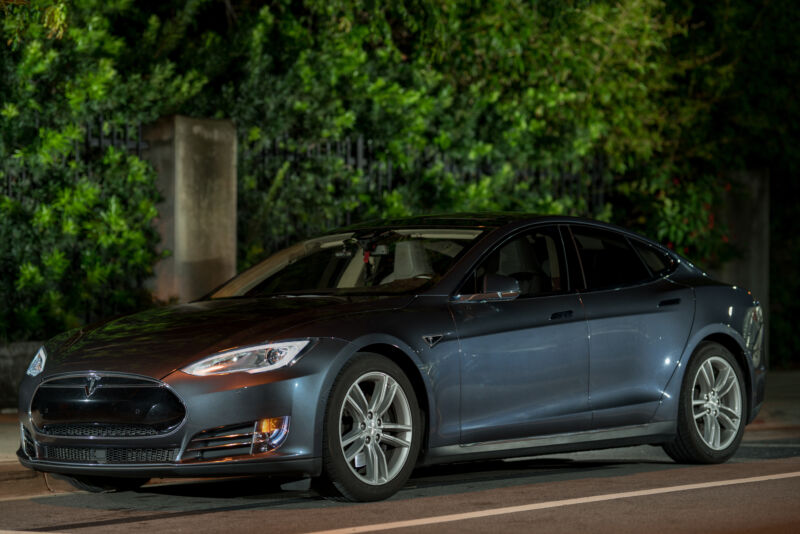
Tesla CEO Elon Musk is fighting back against speculation that a deadly Tesla crash in the Houston area on Saturday might have occurred while Tesla's Autopilot driver-assistance software was active.
"Data logs recovered so far show Autopilot was not enabled," Musk tweeted on Monday afternoon.
The vehicle was totaled, so it's not clear if crash data on the vehicle survived. But Tesla vehicles are equipped with cellular connections, and the 2019 Model S may have transmitted key data wirelessly to Tesla's servers in the seconds after the crash.
In the same tweet, Musk also said that the owner of the vehicle "did not purchase FSD." That's short for "full self-driving," a software package that Tesla says will eventually enable fully driverless operation. The current "beta" version of FSD still requires active supervision, however.
Musk also added that "standard Autopilot would require lane lines to turn on, which this street did not have."
Some have questioned that claim. One Tesla owner posted a video on Sunday showing that he was able to activate Autopilot on a small road with no obvious lane lines. As the car approached a sharp curve, it did not appear to turn the wheel or slow down before the driver intervened.
Musk's tweet was a reply to a Tesla defender arguing that Autopilot couldn't have been active because Autopilot won't work unless there's a driver in the driver's seat—supposedly, Tesla vehicles disable Autopilot if the seat's weight sensor doesn't detect an adult's weight. Local officials have said that no one was in the driver's seat at the time of the crash. According to police, one man was in the front passenger seat, while the other was sitting in the back seat.
But Tesla critics have also disputed this claim. One video from September showed a man enabling Autopilot in a parking lot, then climbing out through a window. He reached in with a camera tripod and pushed the accelerator on the vehicle to get it to drive across the parking lot at 1 mile per hour.
To be clear, none of this is conclusive evidence that Autopilot was active before the Texas crash. There might be subtle reasons that it would have been impossible to enable Autopilot on the street where the crash occurred. At a minimum, if the owner did activate Autopilot from the passenger seat, it's likely that he had to deliberately bypass some safety features to do so. It's a confusing situation where all possible explanations seem rather unlikely.
Musk's tweet got the attention of local officials investigating the crash.
"If he is tweeting that out, if he has already pulled the data, he hasn’t told us that," Harris County Constable Mark Herman told Reuters on Monday. "We will eagerly wait for that data."
The crash is also under investigation by two federal agencies: the National Transportation Safety Board, which investigates car, train, airplane, and other crashes, and the National Highway Traffic Safety Administration, which sets rules for the auto industry.
Business - Latest - Google News
April 20, 2021 at 10:49PM
https://ift.tt/3aIKi7R
Elon Musk denies Autopilot was active before deadly crash in Texas - Ars Technica
Business - Latest - Google News
https://ift.tt/2Rx7A4Y
Bagikan Berita Ini















0 Response to "Elon Musk denies Autopilot was active before deadly crash in Texas - Ars Technica"
Post a Comment